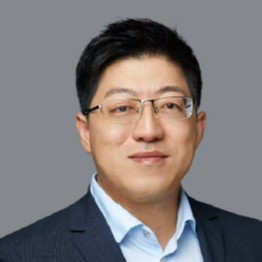VOLVER
IMCAS China 2025
IMCAS China 2025
Programa
Industry sponsored lectures
Sala: Open Stage
Fecha: sábado 12 julio 2025 de 11:00 a 16:30
Formato: CHARLA EN ESCENARIO ABIERTO > presentaciones orales grabadas en un escenario dedicado dentro del área de exposición
Fecha: sábado 12 julio 2025 de 11:00 a 16:30
Formato: CHARLA EN ESCENARIO ABIERTO > presentaciones orales grabadas en un escenario dedicado dentro del área de exposición
Las presentaciones
| Horas | Oradores | Título de la presentación | Resumen | Número |
| 11:00 | SHANGHAI MAY SKIN - AI for Aesthetic Growth: How Skin Analysis Drives Precision Treatment and Clinic High Conversion | 147858 | ||
| 11:15 | DIOR - The reverse Aging science for beauty | Ver | 147859 | |
| 11:30 | LOTOS UNITED - Hybrid treatment protocols in different morphotypes of facial ageing: PLLA and HA fillers | Ver | 147860 | |
| 11:45 | Doctor IP in action: from 13 years of clinical practice to building a medical aesthetics brand ecosystem - Asian skin, anti-aging, and online penetration | Ver | 147861 | |
| 12:00 | VINNO - Ultrasound Aesthetic Solutions | 147862 | ||
| 13:45 | OBAGI - Research Progress on Melasma | 147869 | ||
| 14:00 | OBAGI - Sharing of Combination Treatment Strategies for Melasma with Topical Obagi Hydroquinone and Vitamin C Preparations | 147870 | ||
| 14:15 | GE HEALTHCARE - Vscan Air™ launches a new era of visual aesthetics | 147871 | ||
| 14:30 | LOTOS UNITED - The potential of PLLA and uncrosslinked HA in collagen stimulation programs | Ver | 147872 | |
| 14:45 | LOTOS UNITED - The reasonable approach of combination EBDs and PLLA in aesthetic medicine | 147873 | ||
| 15:00 | FIMAN BIOTECHNOLOGY - The Renaissance of Animal-Derived Collagen Fillers in China: A Perfect Storm of Innovation and Demand | 147874 | ||
| 15:15 | LABORATOIRES VIVACY - Yield stress and plastic domain as innovative rheological parameters for characterization of crosslinked hyaluronic acid hydrogels and clinical application potential | 147875 | ||
| 15:30 | UNILEVER - Beauty and Wellbeing Science and Technology | 147876 | ||
| 15:45 | UNILEVER - Pioneering Research Revealing the Importance of Stress in Relation to Skin and Hair Well-being | 147877 | ||
| 16:00 | UNILEVER - The Power of Multi-Vitamin to Restore the Stressed Skin and Aging | 147878 | ||
| 16:15 | UNILEVER - ExoBooster: Lactobacillus Exosomes for Skin-rejuvenating | 147879 | ||













